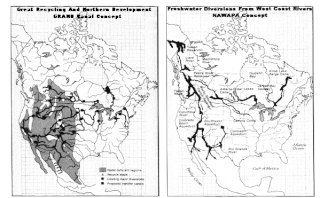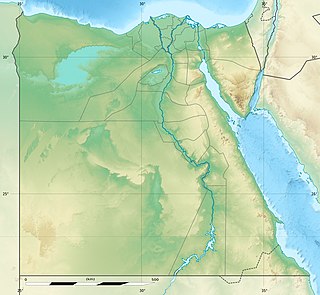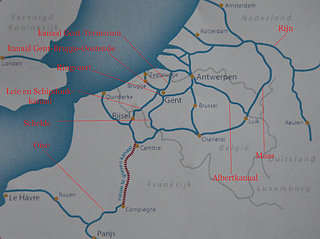 W
WThe Danube–Oder Canal is a planned and partially constructed artificial waterway in the Lobau floodplain of the Danube at Vienna, that was supposed to stretch along the Morava River to the Oder at the city of Kędzierzyn-Koźle in Poland.
 W
WThe Eurasia Canal is a proposed 700-kilometre-long (430 mi) canal connecting the Caspian Sea to the Black Sea along the Kuma-Manych Depression. Currently, a chain of lakes and reservoirs and the shallow irrigation Kuma-Manych Canal are found along this route.
 W
WGaleru Nagari Sujala Sravanthi Project or GNSS project is an irrigation project in Kadapa and Chitoor districts of Andhra Pradesh.
 W
WThe Isthmus of Tehuantepec is an isthmus in Mexico. It represents the shortest distance between the Gulf of Mexico and the Pacific Ocean. Prior to the opening of the Panama Canal, it was a major shipping route known simply as the Tehuantepec Route. The name is taken from the town of Santo Domingo Tehuantepec in the state of Oaxaca; this was derived from the Nahuatl term tecuani-tepec.
 W
WThe Jonglei Canal was a canal project Started but never completed to divert water through the vast Sudd wetlands of South Sudan so as to deliver more water downstream to Sudan and Egypt for use in agriculture.
 W
WThe Istanbul Canal is a project for the artificial sea-level waterway, which is planned by the Republic of Turkey on the European side of Turkey, connecting the Black Sea to the Sea of Marmara, and thus to the Aegean and Mediterranean seas. Istanbul Canal would bisect the current European side of Istanbul and thus form an island between Asia and Europe. The new waterway would bypass the current Bosporus.
 W
WThe Nicaraguan Canal, formally the Nicaraguan Canal and Development Project was a proposed shipping route through Nicaragua to connect the Caribbean Sea with the Pacific Ocean. Scientists were concerned about the project's environmental impact, as Lake Nicaragua is Central America's key freshwater reservoir while the project's viability was questioned by shipping experts and engineers.
 W
WThe North American Water and Power Alliance is a proposed continental water management scheme conceived in the 1950s by the US Army Corps of Engineers. The planners envisioned diverting water from some rivers in Alaska south through Canada via the Rocky Mountain Trench and other routes to the US and would involve 369 separate construction projects. The water would enter the US in northern Montana. There it would be diverted to the headwaters of rivers such as the Colorado River and the Yellowstone River. Implementation of NAWAPA has not been seriously considered since the 1970s, due to the array of environmental, economic and diplomatic issues raised by the proposal. Western historian William deBuys wrote that "NAWAPA died a victim of its own grandiosity."
 W
WThe Northern river reversal or Siberian river reversal was an ambitious project to divert the flow of the Northern rivers in the Soviet Union, which "uselessly" drain into the Arctic Ocean, southwards towards the populated agricultural areas of Central Asia, which lack water.
 W
WThe Red Sea–Dead Sea Conveyance, sometimes called the Two Seas Canal, is a planned pipeline that runs from the coastal city of Aqaba by the Red Sea to the Lisan area in the Dead Sea. It will provide potable water to Jordan, Israel and the Palestinian territories, bring water with a high concentration of salts resulting from the desalination process to stabilise the Dead Sea water level, and generate electricity to support the energy needs of the project. The project is going to be carried out by Jordan and is entirely in Jordanian territory. The project will be financed by the governments of Jordan, Israel, and a number of international donors.
 W
WThe Sahara Sea was the name of a hypothetical macro-engineering project which proposed flooding endorheic basins in the Sahara Desert with waters from the Atlantic Ocean or Mediterranean Sea. The goal of this unrealized project was to create an inland sea that would cover the substantial areas of the Sahara Desert which lie below sea level, bringing humid air, rain, and agriculture deep into the desert.
 W
WThe Salwa Canal was a proposed shipping route and tourism project through Saudi Arabia along its border with Qatar, effectively turning the latter into an island.
 W
WThe Seine–Nord Europe Canal is a projected high-capacity canal in France that would link the Oise River at Compiègne with the Canal Dunkerque-Escaut, east of Arleux. It is the French part of a proposed Seine-Scheldt canal that would ultimately connect the Rhine and Seine basins inland. The stated objective is to expand trade flows in a fuel-efficient and ecologically friendly manner between the Seine basin and Belgium, Germany and the Netherlands, while reducing saturation on the A1 motorway in France and reducing the CO2 emissions in the transport sector within this corridor.
 W
WSethusamudram Shipping Canal Project is a proposed project to create a shipping route in the shallow straits between India and Sri Lanka. This would provide a continuously navigable sea route around the Indian Peninsula. The channel would be dredged in the Sethusamudram sea between Tamil Nadu and Sri Lanka, passing through the limestone shoals of Rama's Bridge.
 W
WThe South–North Water Transfer Project, also translated as the South-to-North Water Diversion Project is a multi-decade infrastructure mega-project in China. Ultimately it aims to channel 44.8 billion cubic meters of fresh water annually from the Yangtze River in southern China to the more arid and industrialized north through three canal systems:The Eastern Route through the course of the Grand Canal; The Central Route from the upper reaches of Han River via the Grand Aqueduct to Beijing and Tianjin; The Western Route which goes from three tributaries of Yangtze River near the Bayankala Mountain to provinces like Qinghai, Gansu, Shaanxi, Shanxi, Inner Mongolia and Ningxia.
 W
WThe Thai Canal, also known as Kra Canal or Kra Isthmus Canal, refers to proposals for a canal that would connect the Gulf of Thailand with the Andaman Sea across the Kra Isthmus in southern Thailand. It is envisaged that such a canal would improve transportation in the region, similar to the Panama Canal and Suez Canal.